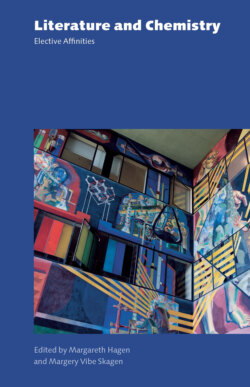Читать книгу Literature and Chemistry - Группа авторов - Страница 8
На сайте Литреса книга снята с продажи.
A SCIENCE WITH AN AMBIGUOUS REPUTATION
ОглавлениеFrom the days of the alchemists up to modern fears about pollution and the creation of hazardous and unnatural substances, chemistry’s imaginary has often had negative connotations. Its Faustian ambitions are old and persistent. Alchemists were not only suspected of serving the devil; their attempts to improve baser metals could easily lead to accusations of greed, fraud, and falsification. Throughout recent decades, chemistry has been associated with environmental harm, intoxication, artificiality, and devastating and dishonorable means of warfare. More than fifty years have passed since Rachel Carson’s Silent Spring aroused animus against the chemical industries’ production of highly damaging pesticides. Additives in food also belong to the list of general concerns people have today about chemistry, not to mention the fear of side effects connected to most types of medication, which may seem almost as powerful as the public appreciation of the essential role chemistry plays in modern medicine. The chemists’ unfortunate public image is not a recent development, and neither are the efforts to repair this image. Chemistry’s reception has always been twofold: “Also in humanist culture chemistry has a very low profile; philosophers in particular keep to their traditional neglect of anything related to chemistry”, write Schummer, Bensaude-Vincent, and Van Tiggelen in the introduction to the volume The Public Image of Chemistry (p. 1). Besides investigating the shaping of this public image, their book also focuses on the representation of chemistry in fiction and cinema, where the cliché of the mad, or malevolent, laboratory scientist9 seems to reflect the common popular perception of the field.10
The third section of this volume is entitled Literary and Cinematic Contributions to the Public Image of Chemistry: Between Celebration and Denigration. Through analyses of literature and film, this section confirms the equivocal conceptions of the science and how it is generally confused with the all-important chemical industry.
Pierre Laszlo introduces the section with his chapter “Raymond Queneau’s ‘The Song of Styrene’”, presenting popularised chemistry’s most jubilatory side. This chapter focuses on the novelist, poet, and co-founder of Oulipo, Raymond Queneau, and his verse accompaniment to Alain Resnais’ commercial film, Le Chant du styrene (1957), which celebrates the wonders of the new universal material – plastic. Laszlo analyses the interplay of voice, music, and movie, and situates Queneau’s witty scientific poem in its biographical and cultural historical contexts.
Attentive to the science’s more defamatory sides, Folkert Degenring’s chapter, “The Invisible Science? Chemistry, Science Fiction, and Popular Culture”, discusses chemistry’s paradoxical omnipresence and low prestige in contemporary culture. Degenring analyses chemistry’s various functions and important role in Anglophone science fiction novels; Alastair Reynolds’s Revelation Space (2000), McAuley’s The Quiet War (2008), and Greg Egan’s The Clockwork Rocket (2011) are used as examples.
Muireann Maguire’s chapter “In the Zone: The Strugatskii Brothers and the Poetics of Pollution in Russian Science Fiction”, deals with one of our culture’s most negative automatisms related to chemistry: the fear of environmental catastrophe. She explores the “poetics of pollution” inaugurated by Chekhov and pursued by Russian ecological science fiction, focusing especially on two of the Strugatskii brothers’ most important novels: The Inhabited Island (1969) and Roadside Picnic (1971). The last novel is most familiar to Western audiences via Tarkovskii’s cinematic adaptation of it in Stalker (1979).
